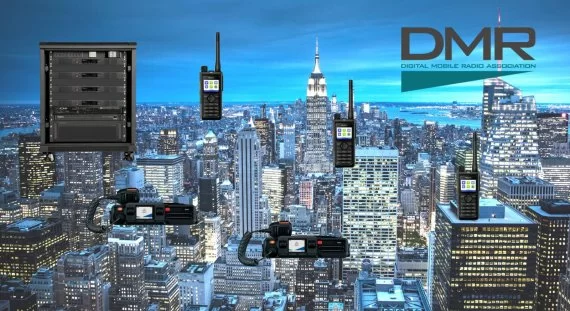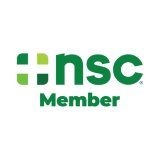What is Extended Pseudo Trunk (XPT)?
How Hytera XPT Expands Group Calling Capacity on DMR Tier II Repeater Systems
 Developed exclusively by Hytera, the Extended Pseudo Trunking (XPT) system is based on the DMR Tier II Conventional Standard and adds capabilities normally found in higher cost Tier III trunking systems. XPT is best suited for organizations that require high-capacity and high-reliability group communications.
Developed exclusively by Hytera, the Extended Pseudo Trunking (XPT) system is based on the DMR Tier II Conventional Standard and adds capabilities normally found in higher cost Tier III trunking systems. XPT is best suited for organizations that require high-capacity and high-reliability group communications.
XPT makes DMR Tier II repeater systems more efficient to provide more channel capacity and adds valuable new features without the purchase of expensive radio infrastructure hardware. Migrating from conventional DMR Tier II or IP Connect to XPT trunking is easy, especially if you are currently using Hytera DMR repeaters. XPT is as simple as installing repeaters for the additional channel capacity, adding the license to the repeaters, and adding a network switch for them to communicate.
A key advantage of an XPT Trunking system is that it enables greater efficiency and dynamic channel allocation with less hardware that Tier III trunking systems, and does so without the use of an FCC FB8 Control Channel Frequency further maximizing site capacity.
Capabilities of Hytera XPT:
- Enables high-capacity group calling and high-reliability communications
- Efficient use of available frequency spectrum
- Maintains all the functions and capabilities of Tier II systems, including voice and data services, text messaging, and GPS tracking
How XPT Works
The XPT Trunking System enables the combination of multiple talk channels, or trunking, by connecting multiple repeaters operating in pseudo trunking mode. The system allows the radios to use any of the idle repeaters in the system.
The repeaters in an XPT site have similar power supplies, antenna, and associated equipment as a DMR Tier II or IP Connect repeater site, but XPT uses multiple repeaters. There is a maximum of eight repeaters at a single XPT site that provides a maximum of sixteen voice channels. The repeaters communicate with each other through a Layer-2 network switch.
The repeaters consist of one Primary Repeater and up to seven Secondary Repeaters. There can be only one Primary repeater in an XPT system.
These XPT repeaters are assigned different roles in the repeater group:
Home Repeater – In the XPT site, each talk group (radios programmed to participate in different group calls) must be assigned with a repeater in this site as its Home Repeater. The radio always monitors its Home Repeater to determine whether any call is made to the radio in the XPT system. The radio initiates a call preferentially on the slot of Home Repeater in last transmission. Any repeater at the XPT site can be a Home Repeater to one or more talk groups.
Free Repeater – In each XPT site, any registered voice repeater with one or two idle slots can be assigned as a Free Repeater. Only one Free Repeater can exist at a time in one XPT site. When the Home Repeater is busy, the radio switches to the channel where the Free Repeater is operating to monitor. If the free repeater is busy at the same time, it will assign another on-line and idle repeater as the new free repeater.
Voice Repeater – Used to repeat voice services, message and signaling services between radios.
Data Repeater – Used to repeat dedicated data services sent by radios to dispatch station. For example, for AVL dispatching, the radio is required to report its GPS positioning information periodically, so that the dispatch station can position the radio and monitor its track. A large amount of Radio Registration data and GPS data transmission is required for dispatching. A data repeater can improve the transmission efficiency of the XPT system. It is recommended to configure one or more data repeaters in an T system when radio dispatching is required.
In an XPT system a call is always started through that group's Home Repeater. If that repeater is busy (both voice slots are occupied), the radio will automatically switch to a designated Free Repeater. That is, a repeater that is idle or available. In this case, where the Home Repeater is busy, the radio will already know the Home Repeater is busy, and it will automatically use the Free Repeater. This happens before the user presses the Push-to-Talk button. This process minimizes system access time and further increases efficiency and capacity. This also ensures that there is a very low probability that all voice channels will be busy at the same time.
For example, a conventional radio system has five talk groups: G1, G2, G3, G4, and G5; and there are two repeaters with each repeater having two voice channels, or time slots. The radio talk groups are programmed to use each repeater: G1, G2, and G3 uses Repeater 1, and G4, G5 uses Repeater 2. If G1 and G2 are currently talking (and using Repeater 1), and G3 tries to talk, they will get a busy signal. Even if repeater 2 is not being used.?That is a challenge with conventional repeater systems.
But if the repeaters are operating with XPT mode, G3 will automatically use repeater 2, with no input or notification of the user.? Also, anyone else in Group 3 will also move to repeater 2 for the duration of the call.? All calls are efficiently managed with no busy signals.
But if the repeaters are operating in XPT mode, G3 will automatically use repeater 2, with no input or notification of the user. Also, anyone else in Group 3 will also move to repeater 2 for the duration of the call. All calls are efficiently managed with no busy signals.

Multi-Site XPT
XPT Repeaters expand the call capacity at a radio system site by adding talk channels to the system using multiple repeaters. Multiple XPT systems at different locations can connect over an IP network like IP Connect, but with the added benefit of multi-channel trunking functionality to expand the calling capacity over all XPT sites. Group calls can be made across the IP network to other XPT sites.
XPT uses routers to connect each site to the IP network, with the XPT repeaters at each site connected to each other with a layer-2 switch. There is still only one Primary repeater, but a new kind of repeater called the Sub-Primary is deployed at each site to control the networked trunking calls from other sites. It is common for overlapping with XPT multi-site so roaming is a widely used feature.

The Benefits of XPT
It is Easy to Migrate to XPT – Migrating from conventional DMR to XPT trunking is easy, especially if you are currently using Hytera DMR repeaters. XPT is as simple as adding the license to the repeaters, reprogramming the repeater, and adding a network switch for them to communicate. Organizations can start with a single-site implementation and gradually add additional sites as needed. All Hytera professional DMR radios support XPT trunking and can be deployed on XPT systems.
Hytera XPT is designed to be scalable and can accommodate growing organizations without significant upfront costs. No need for forklift upgrades and completely throwing out the old system simply because growing communication needs require additional system capacity.
XPT is Easy to Operate – Because XPT trunking is based off the DMR Tier II standard, operation is familiar with little interaction needed from the end user. Switching Talk Groups is as easy changing the channel knob on the radio. No need to figure out the correct repeater to use, or where the rest of your Group is. XPT takes care of that on the backend keeping you in touch with your people with reliability and confidence.
XPT is Scalable with Expanded Capacity – An XPT trunking site supports up to 16 voice channels and 16 data channels as well as support for up to 1,200 radios. That is far more than a convention repeater system. XPT systems can also be connected for multi-site applications. Currently XPT systems can be as small as 2 sites or as large as 16 sites. All sites are connected, and roaming is built-in for those that travel between sites.
Improved Security – XPT has an Authorization Key that prevents any unauthorized (pirate) users from connecting to the XPT system. Trunking systems in general provide inherent security and privacy as the typical 'scanner' user cannot hear a complete conversation because the call can jump channels frequently which the scanner user cannot track. XPT also includes DMR encryption and licensed AES 128-bit encryption.
Leverages the Benefits of DMR – Digital Mobile Radio (DMR) is the open radio industry standard used in professional mobile radio applications. DMR uses TDMA technology to divide a single 12.5kHz channel into two time slots, allowing two separate conversations to take place at the same time. DMR offers numerous advantages over analog radio systems, including improved voice quality, longer battery life, double the call capacity, and support a wide variety of flexible calling options. Using repeater sites that conform to DMR standards ensures that all radios and repeater sites operate to a common standard and enables the creation of a robust and reliable communication system.
Does not Require a Dedicated Control Channel – A key advantage of an XPT Trunking system is that it enables efficiencies and dynamic channel allocation with less hardware and without a Dedicated Control Channel frequency (also known as an FCC FB8 control channel frequency Trunking License). Unlike Tier III DMR Digital Trunking, XPT DMR Tier II Trunking does not use a Dedicated Control Channel. This Dedicated Control Channel in Tier III systems must be operational all the time to manage all the other channels on the system, and requires a special FCC license, which is expensive and difficult to get in high-density metropolitan areas. This could be a non-starter for any new Tier III trunking systems. XPT uses a series of beacons sent by each repeater to optimize channel usage and keep the radios in the field informed of system status. Another benefit of not requiring a Dedicated Control Channel is that the frequency can be used for voice traffic. This is even more important with smaller systems that may start out with two XPT repeaters. Not having to give up a voice channel for a Dedicated Control Channel allows for maximum efficiency of the radio system.
Summary
Extended Pseudo Trunk (XPT) is an exclusive Hytera radio technology that enables cost-effective trunking of radio channels to increase the group calling capacity of Tier II repeater sites with the addition of a network switch to manage the talk channels on multiple repeaters. XPT can be deployed at a single repeater site, or the trunked channels can be transported over an IP network to connect multiple XPT sites over a wide area.
| Category: | Two-Way Radio |





